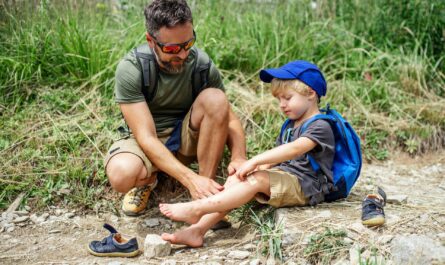Hair loss can be a frustrating and distressing experience for many people, and it can occur due to various reasons such as genetics, age, hormonal changes, or medical conditions. While many hair loss treatments are available, including topical solutions and medications, hair transplant surgery has become an increasingly popular option for those looking to restore their hairline and regain their confidence. This article will explore what hair transplant surgery is, how it works, and what to expect from the procedure.
What is Hair Transplant Surgery?
Hair transplant surgery is a cosmetic procedure that involves moving hair from one area of the scalp (the donor site) to another area (the recipient site) that is experiencing hair loss. The procedure is typically performed under local anesthesia. It can take several hours to complete, depending on the extent of the hair loss and the number of hair follicles being transplanted. While hair transplant surgery can be a costly and time-consuming process, it is a safe and effective way to restore hair growth and improve self-confidence.
There are two main methods of hair transplantation: Follicular Unit Transplantation (FUT) and Follicular Unit Extraction (FUE).

Follicular Unit Transplantation (FUT)
Follicular Unit Transplantation (FUT) involves the removal of a strip of skin from the donor site, usually the back or sides of the scalp, which contains hair follicles. The strip is then dissected into individual follicular units, which are small groups of hair follicles containing one to four hairs each. These follicular units are then transplanted into the recipient site using tiny incisions made in the scalp.
Follicular Unit Extraction (FUE)
Follicular Unit Extraction (FUE) is a newer technique that involves removing individual hair follicles from the donor site using a small punch tool. The follicles are then transplanted into the recipient site using tiny incisions made in the scalp. FUE is less invasive than FUT and typically results in less scarring and a faster recovery time.
How Does Hair Transplant Surgery Work?
Hair transplant surgery works by relocating healthy hair follicles from the donor site to the recipient site, where hair loss occurs. The transplanted hair follicles continue to grow in their new location, resulting in a natural-looking head of hair.
Before the procedure, the surgeon will assess the extent of hair loss and determine the number of hair follicles required for transplantation. The surgeon will carefully remove the hair follicles from the donor site and transplant them into the recipient site using a precise technique.
The transplanted hair follicles may initially shed their hair shafts, but they will then enter a resting phase before starting to grow new hair within a few months. The new hair growth may be gradual, with full results appearing for up to a year.
What to Expect from the Procedure
Before the procedure, the surgeon will provide instructions on how to prepare for the surgery, which may include avoiding certain medications and not smoking for a period of time before the procedure. On the day of the procedure, the patient will receive local anesthesia to numb the scalp.
For FUT, the surgeon will remove a strip of skin from the donor site, which will then be dissected into individual follicular units for transplantation. For FUE, the surgeon will use a small punch tool to remove individual hair follicles from the donor site.
Once the hair follicles are harvested, they will be transplanted into the recipient site using tiny incisions made in the scalp. The incisions will be carefully placed to ensure natural-looking hair growth.
Post Op Care
After the procedure, the patient may experience some discomfort, swelling, and minor bleeding, which can be managed with pain medication and antibiotics. The patient will need to avoid strenuous activity and heavy lifting for several days after the procedure to allow the scalp to heal.
New hair growth may begin to appear within a few months, but it can take up to a year for the full results to become apparent. The transplanted hair follicles will continue to grow and behave like normal hair, requiring regular maintenance such as washing, trimming, and styling.

It’s important to note that hair transplant surgery is not a cure for hair loss, and it cannot prevent future hair loss from occurring. Patients may require additional hair transplant procedures in the future to maintain their results.
Is Hair Transplant Surgery Right for You?
Hair transplant surgery can be an effective and long-lasting solution for hair loss, but it’s important to carefully consider whether it’s the right option for you. Good candidates for hair transplant surgery include individuals who have:
- Healthy hair growth in the donor area
- Stable hair loss that is not due to an underlying medical condition
- Realistic expectations for the results of the procedure
- A willingness to follow post-operative instructions and maintain their new hair growth
It’s also important to consider the potential risks and complications of the procedure, which can include bleeding, infection, scarring, and uneven or unnatural-looking hair growth.
Choosing a qualified and experienced hair transplant surgeon is essential to achieving the best possible results and minimizing the risk of complications. Patients should research potential surgeons carefully, read reviews and testimonials, and schedule consultations to discuss their options and ask questions about the procedure.
Conclusion
Hair transplant surgery can be a life-changing procedure for individuals experiencing hair loss and looking to regain their confidence and self-esteem. By relocating healthy hair follicles from the donor site to the recipient site, hair transplant surgery can restore a natural-looking head of hair that can be maintained and styled like normal hair.
However, it’s important to carefully consider whether hair transplant surgery is the right option for you and to choose a qualified and experienced surgeon who can provide the best possible results with minimal risk of complications. With the right preparation, expectations, and post-operative care, hair transplant surgery can be a safe and effective solution for hair loss.



